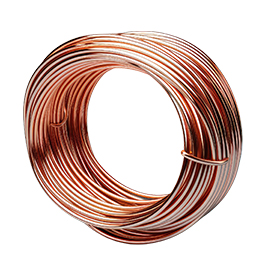
In the world of electrical wiring, copper stands out for its excellent conductivity and durability. However, not all copper wires are created equal, with bare copper and tinned copper being two of the most commonly used variants. Each type offers distinct advantages depending on the application, and understanding their differences is crucial for making informed decisions. This article explores bare copper and tinned copper, their uses, and the advantages of each to help you determine which is best suited for your project.
What is Bare Copper?
Bare copper wire is essentially copper without any coating or plating. It is highly prized for its high conductivity and flexibility, making it ideal for a variety of electrical applications. Bare copper is commonly used in residential building wiring, grounding wires, and in electrical devices where wires do not face excessive exposure to harsh environments. Its excellent electrical conductivity makes it a top choice for transmitting power with minimal resistance.
Uses and Advantages of Bare Copper
Bare copper is widely used where insulation is not necessary, especially in grounding systems where electrical currents need a direct path to the earth. It’s also used in overhead transmission and distribution applications. The primary advantage of bare copper is its cost-effectiveness combined with superior electrical conductivity. Without any coatings, it provides a direct, unimpeded path for electricity.
What is Tinned Copper?
Tinned copper, on the other hand, is copper wire coated with a thin layer of tin. This coating helps protect the copper from corrosion caused by environmental factors such as humidity, moisture, and chemical exposure. The tin also aids in solderability, as it prevents the copper from oxidizing at high temperatures, which can make soldering difficult.
Uses and Advantages of Tinned Copper
Tinned copper is especially useful in marine applications, automotive wiring, and other environments where wires are exposed to high humidity or corrosive elements. The tin coating provides a protective barrier that extends the life of the wire while maintaining its conductivity. Tinned copper is also beneficial in industrial applications where temperatures fluctuate widely, as it prevents the wire from breaking down under thermal stress.
Comparing Bare and Tinned Copper
The choice between bare and tinned copper often comes down to the specific requirements of the environment in which the wire will be used. Bare copper is unmatched in environments where corrosion is not a concern, offering a more cost-effective solution for many indoor applications. Tinned copper, while slightly more expensive, is indispensable in harsh conditions where resistance to oxidation is necessary to maintain performance and longevity.
Conclusion
Both bare and tinned copper wires have their places in electrical applications, depending on the environmental conditions and specific requirements of the project. Understanding the fundamental differences between these two types of copper wire helps ensure that you select the right one for your needs, optimizing performance and durability. Whether it’s the cost-effective conductivity of bare copper or the robust resilience of tinned copper, choosing the right type of wire is crucial for the success of any electrical project.

